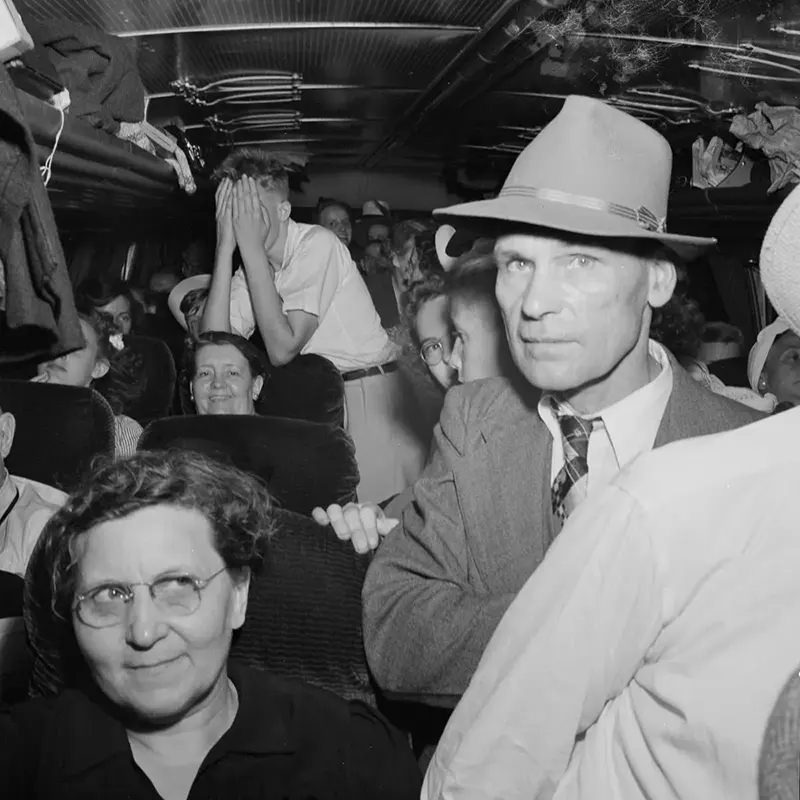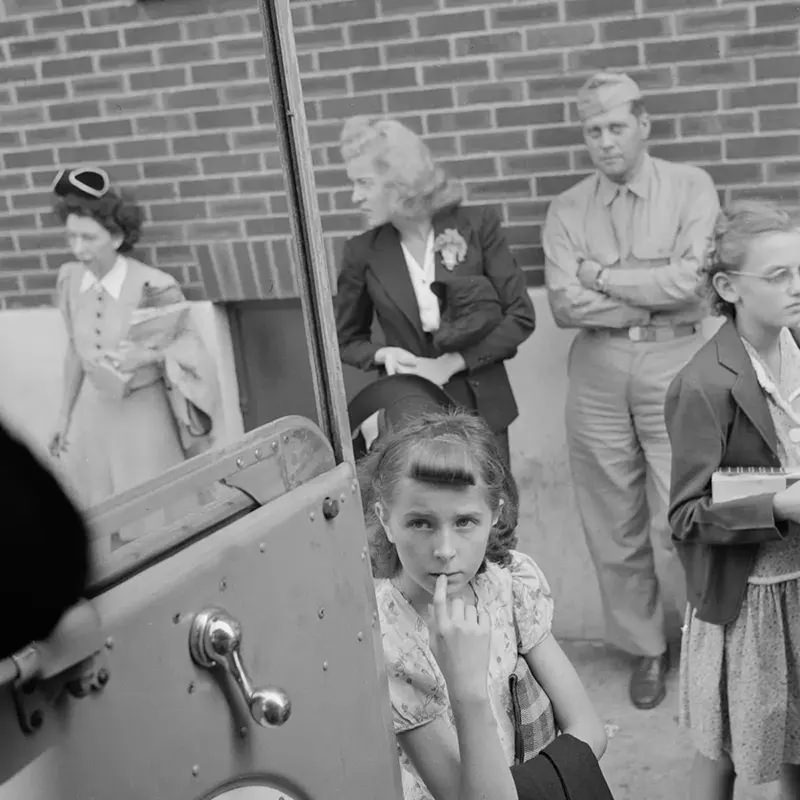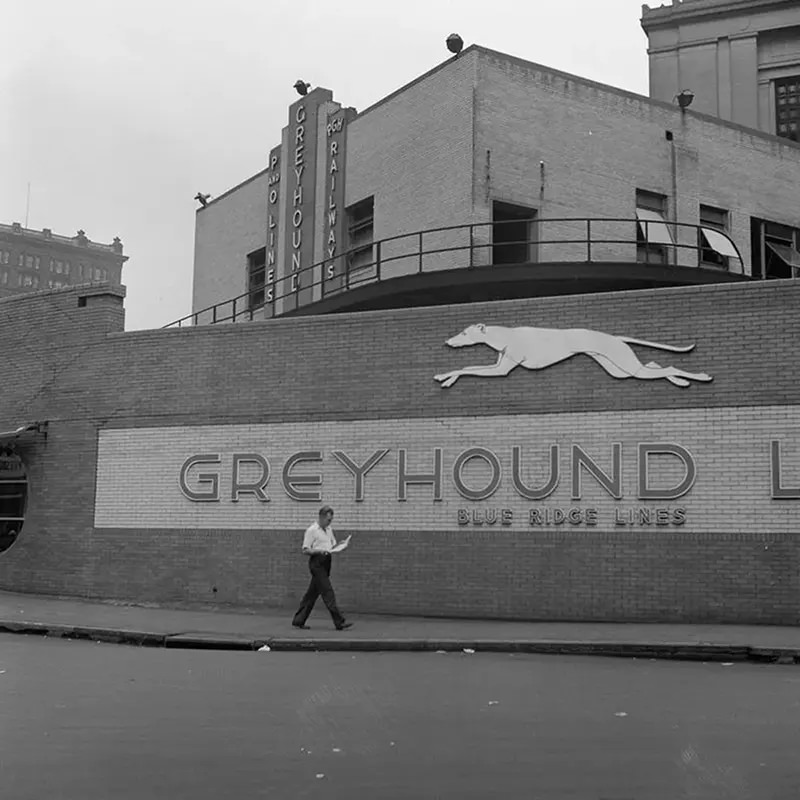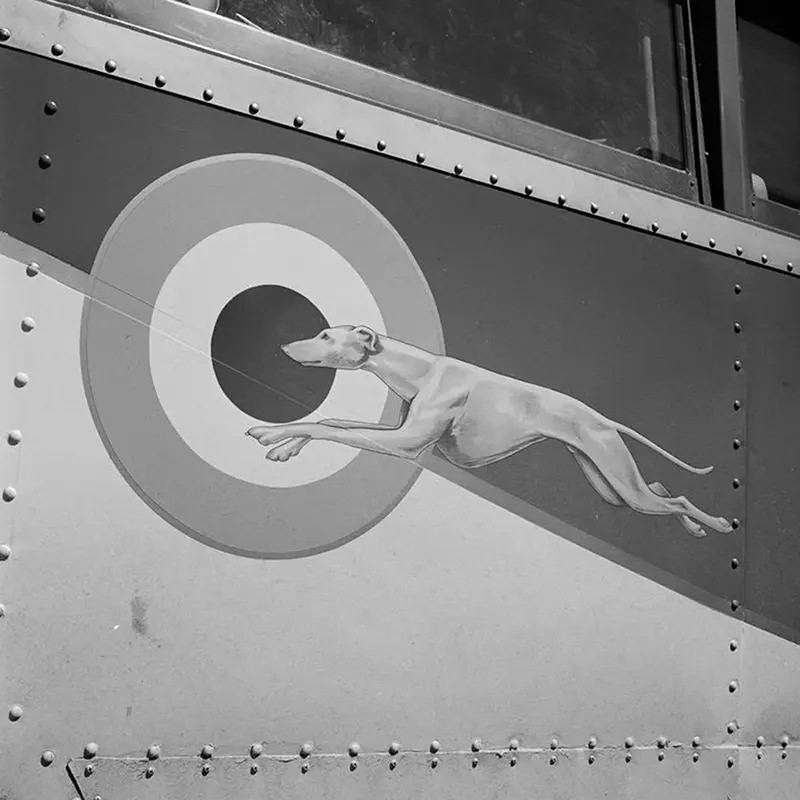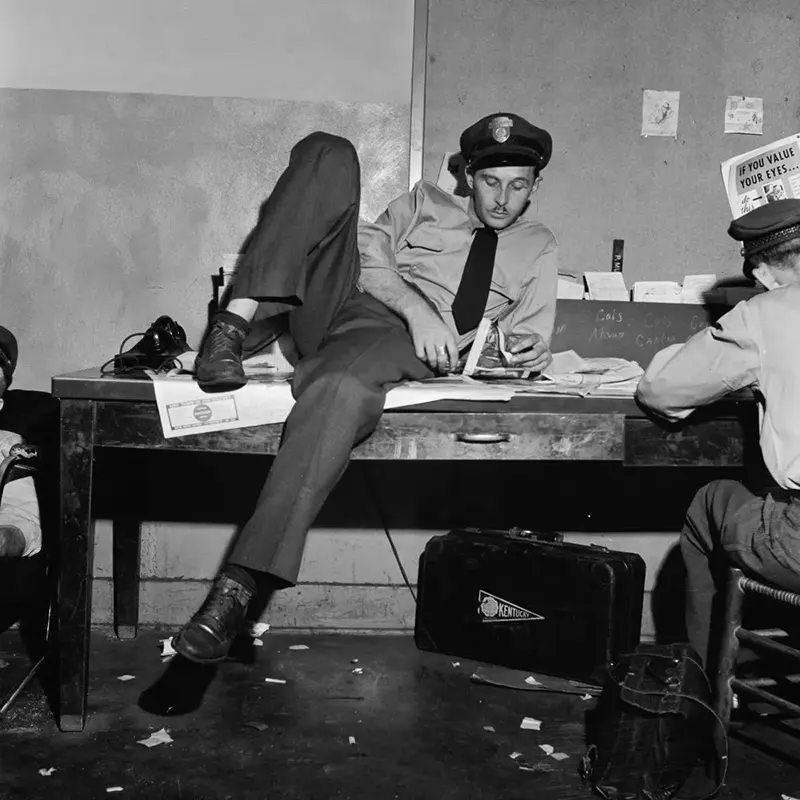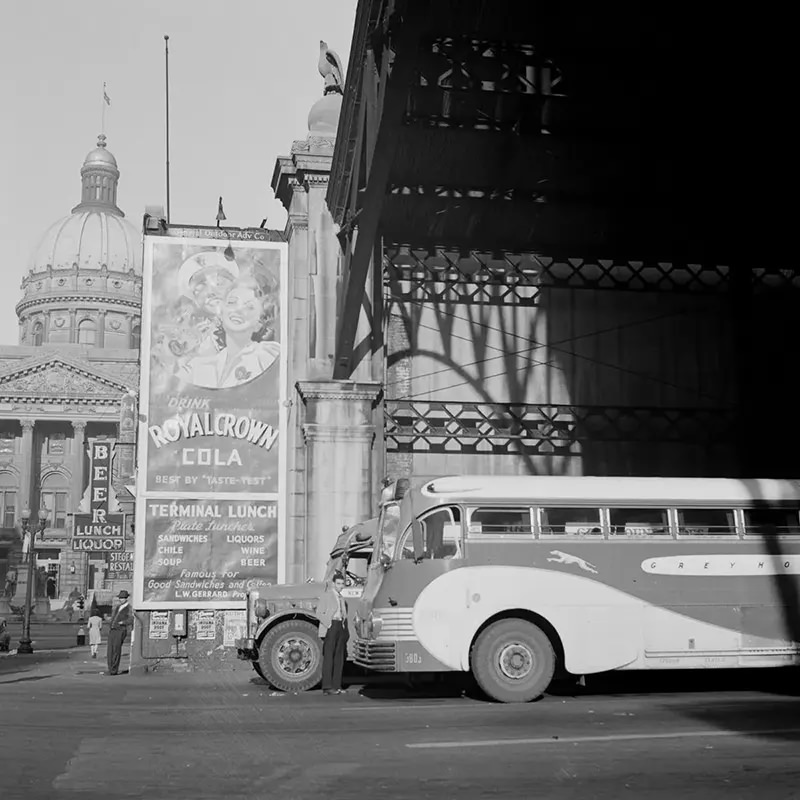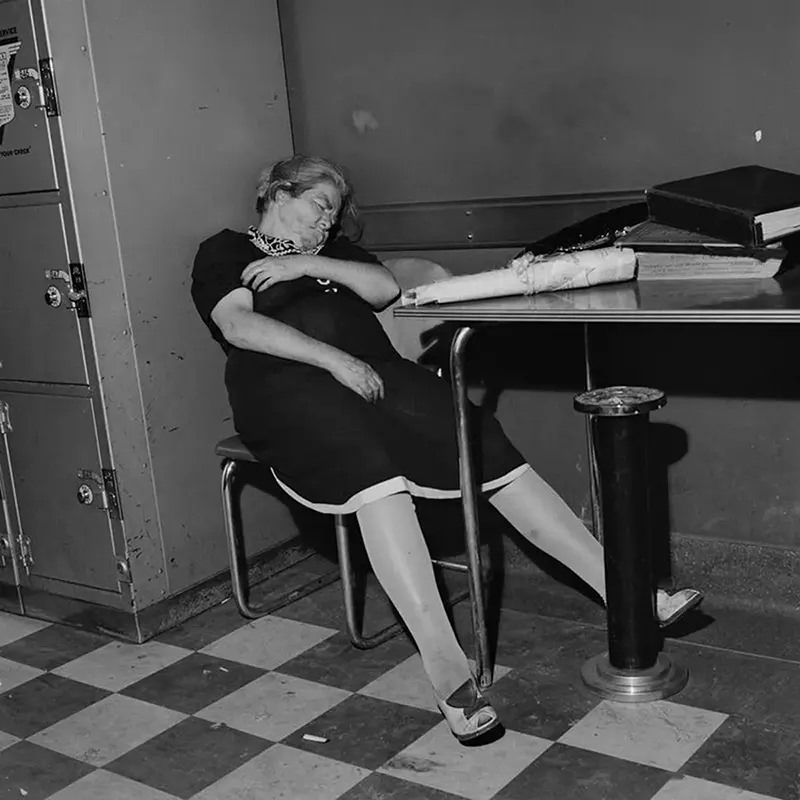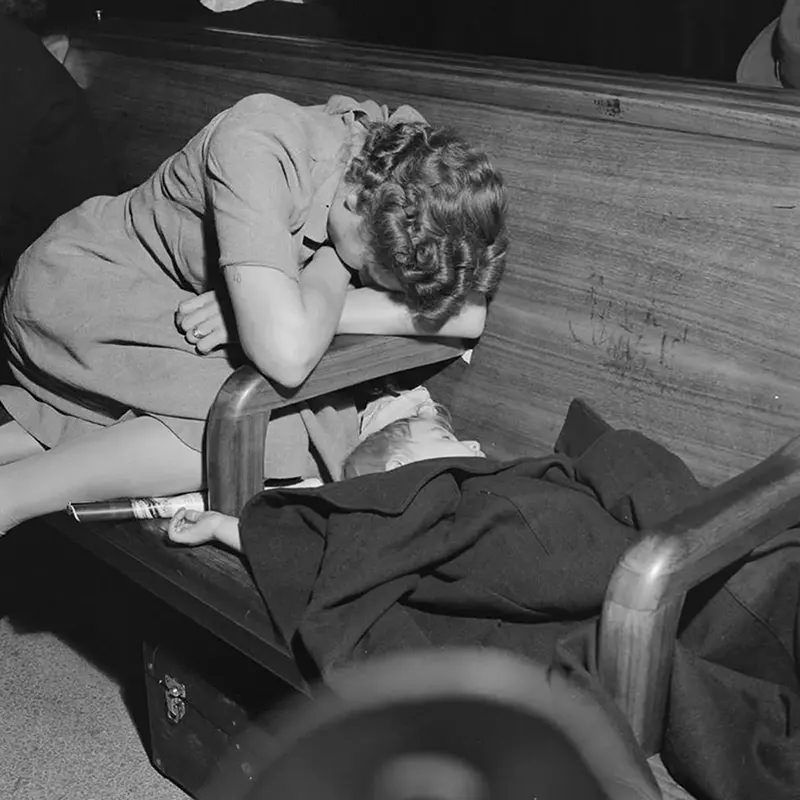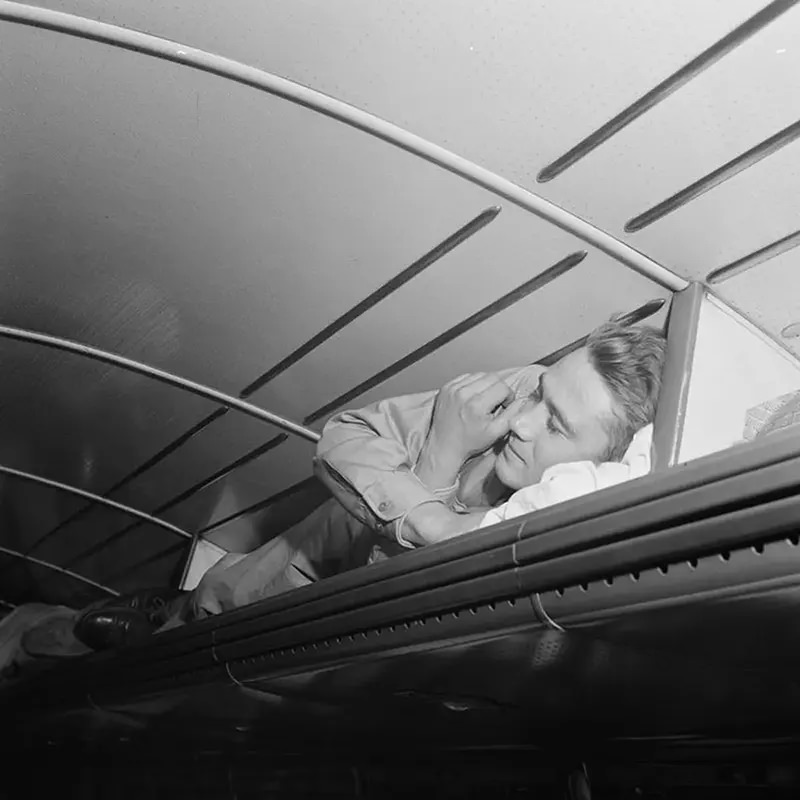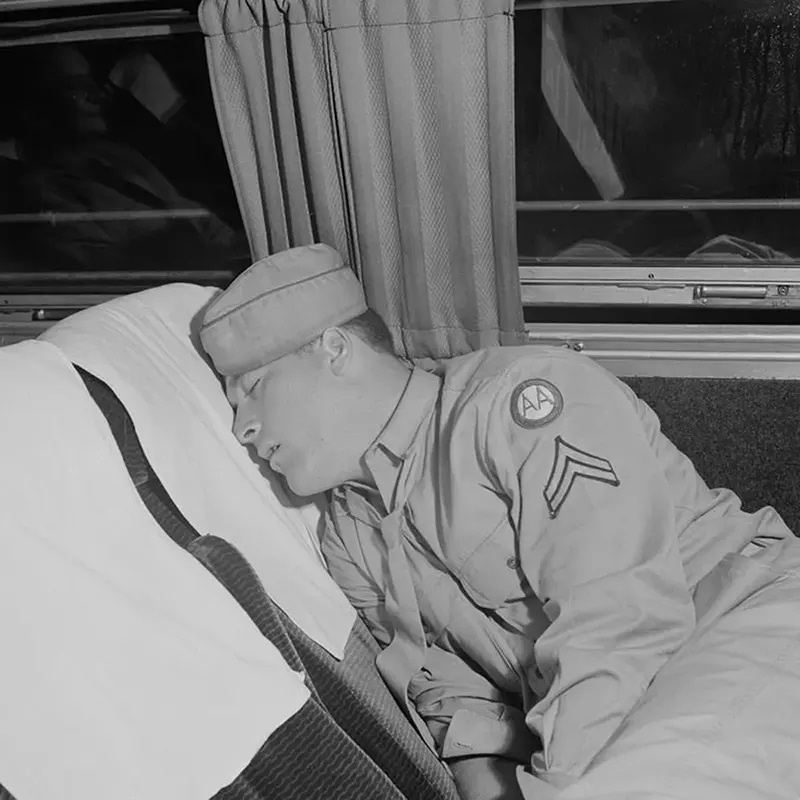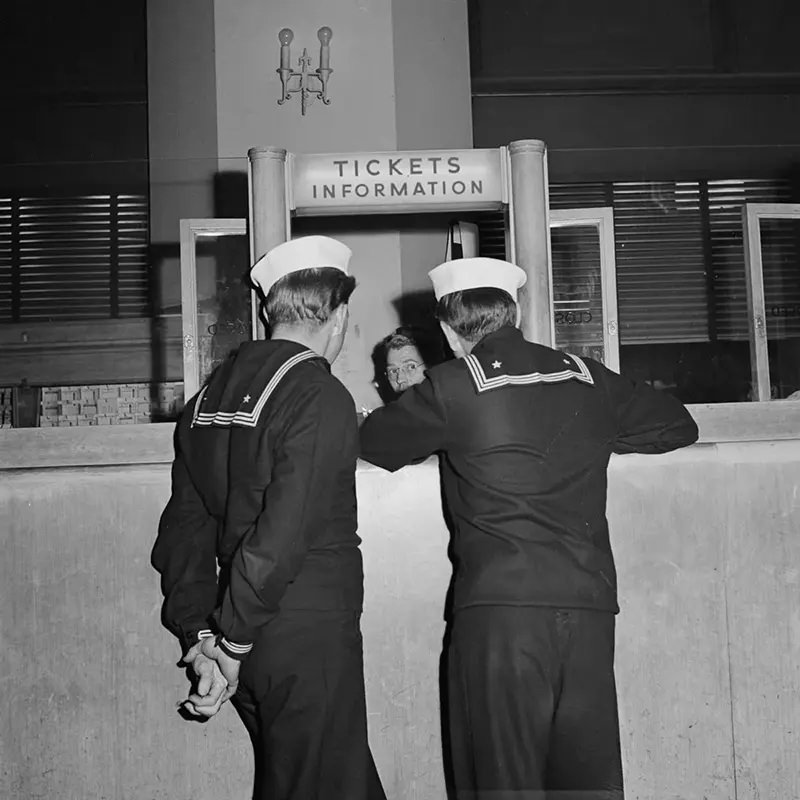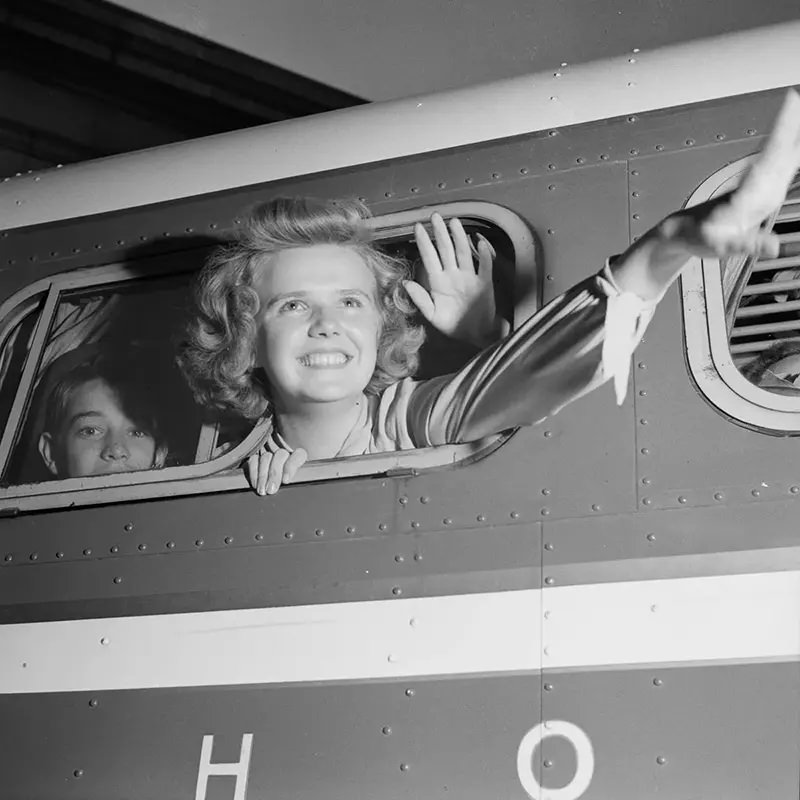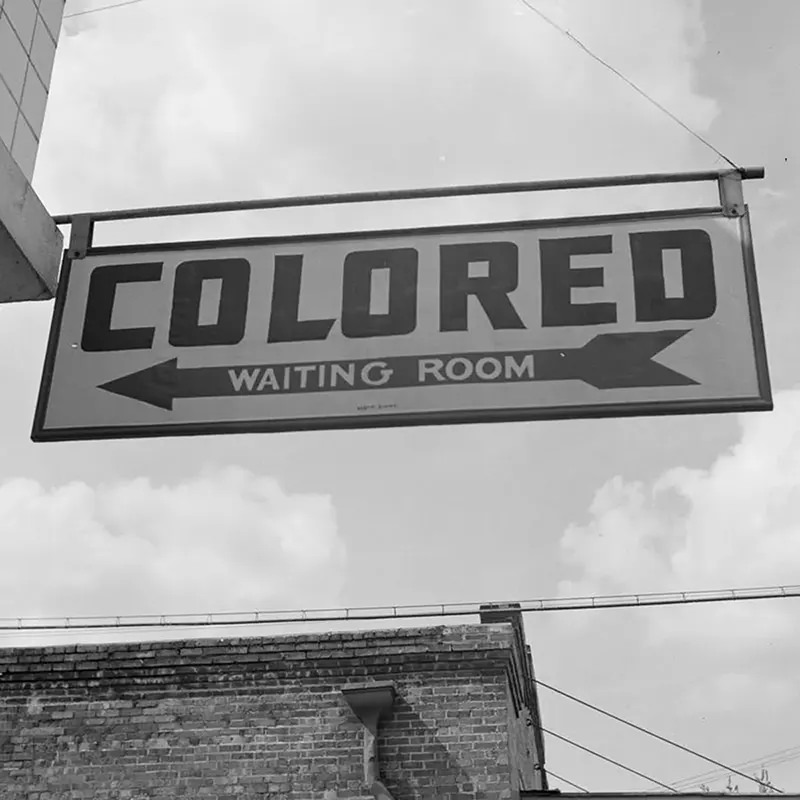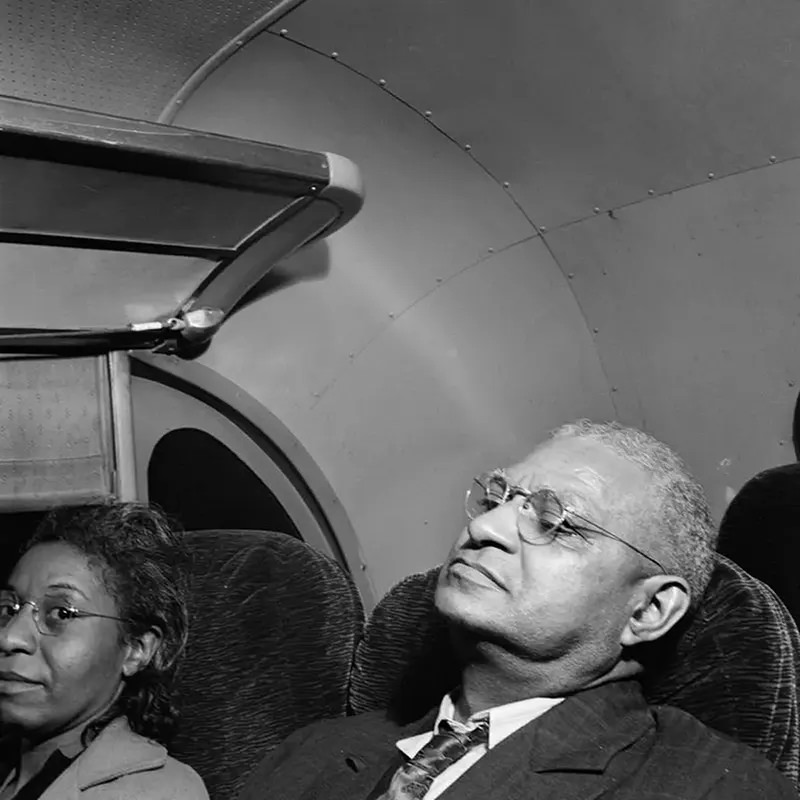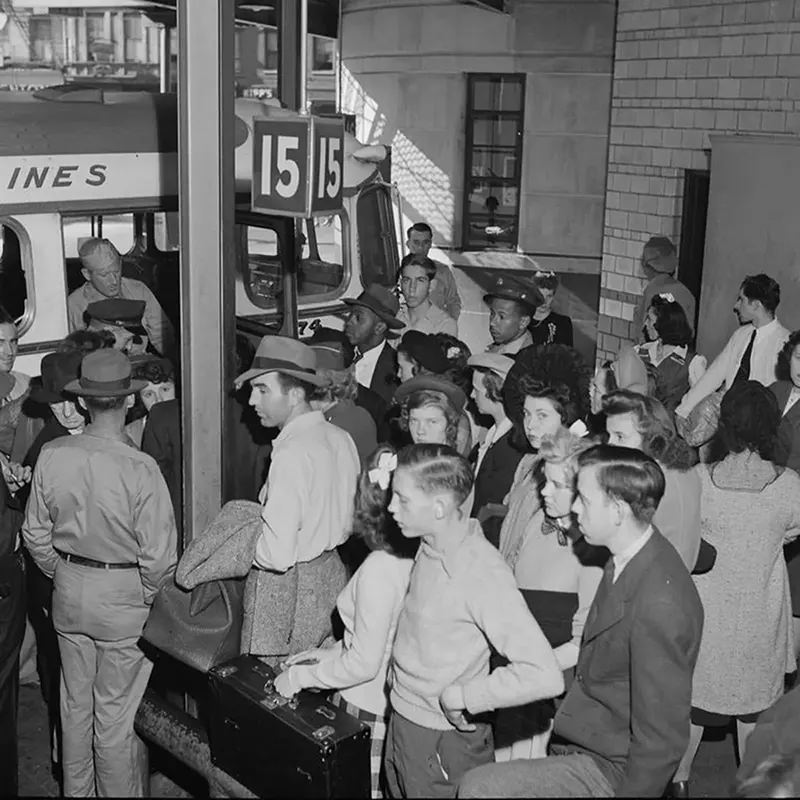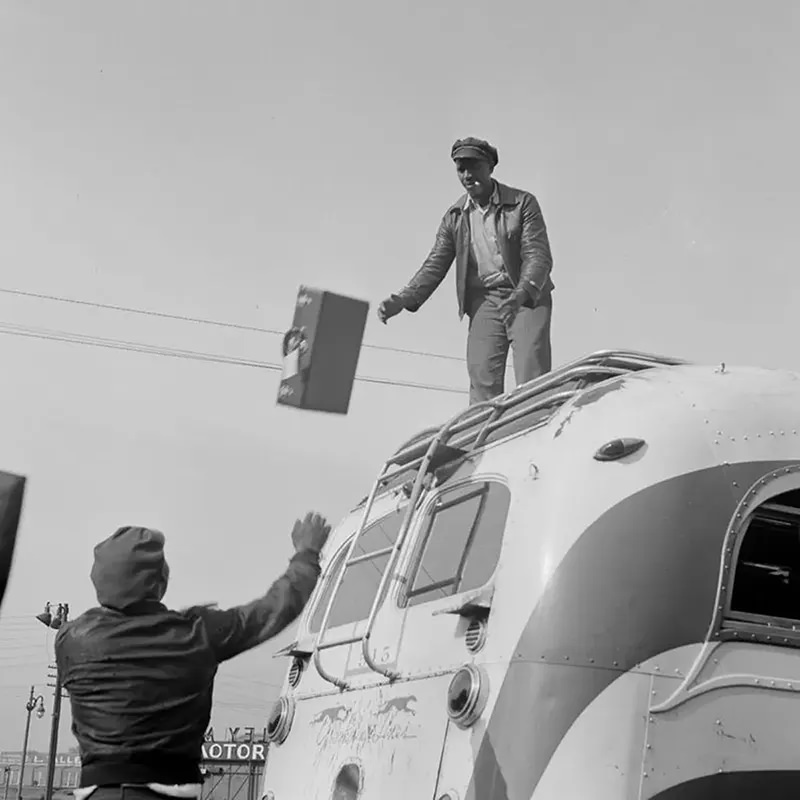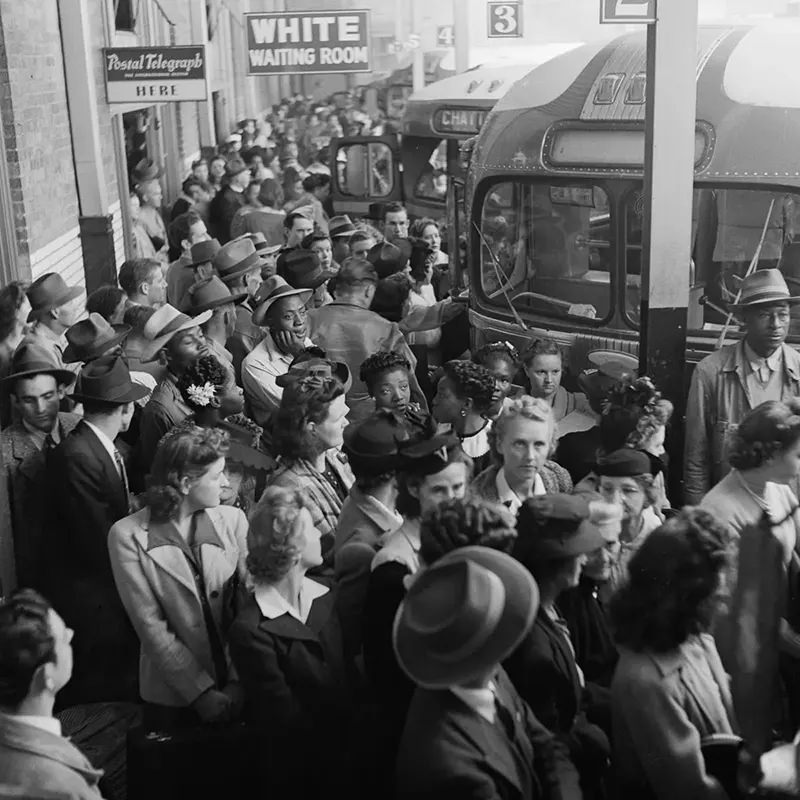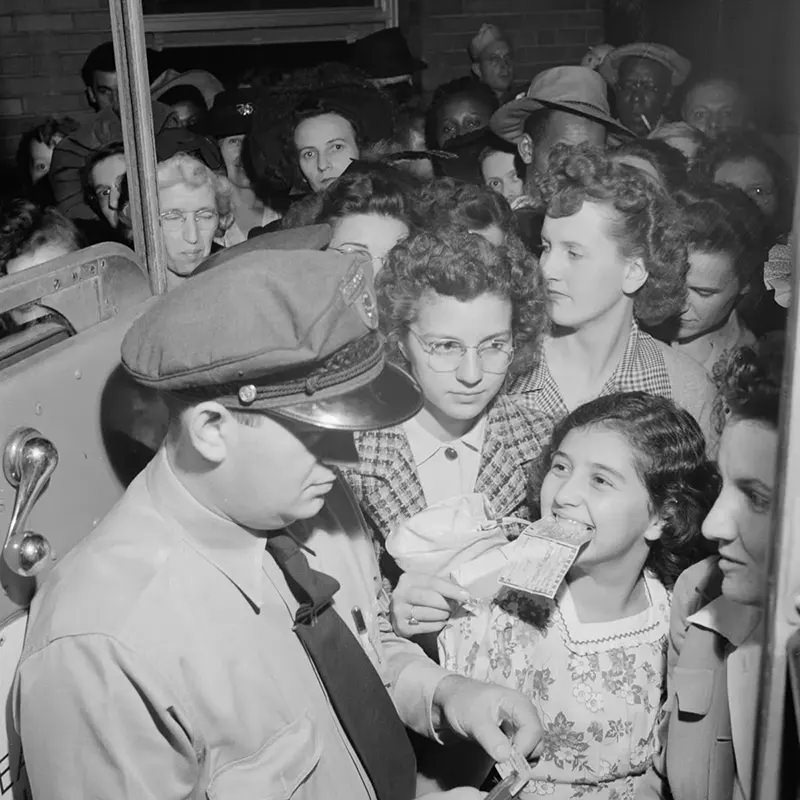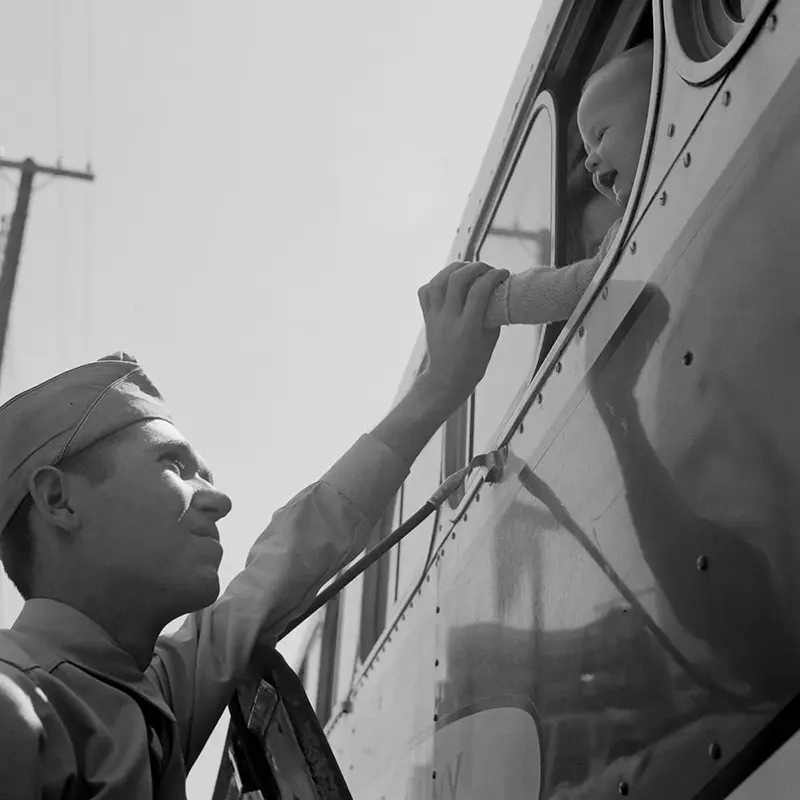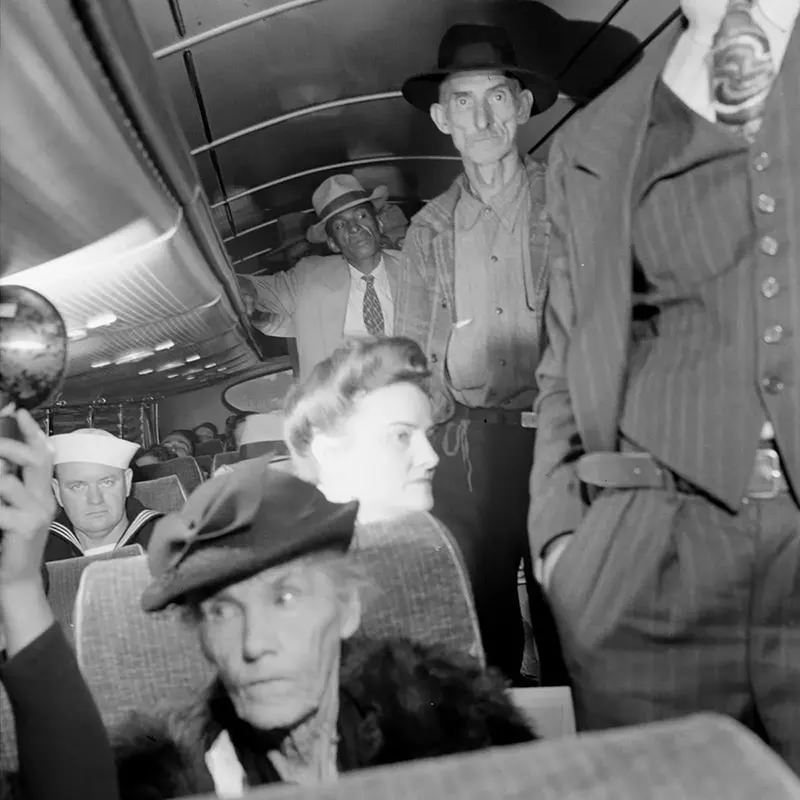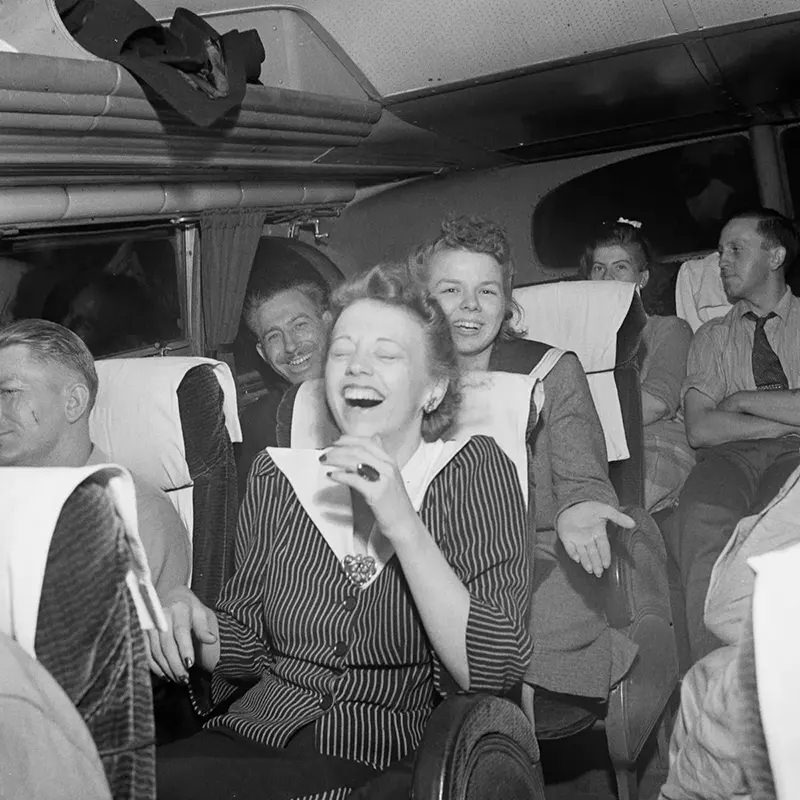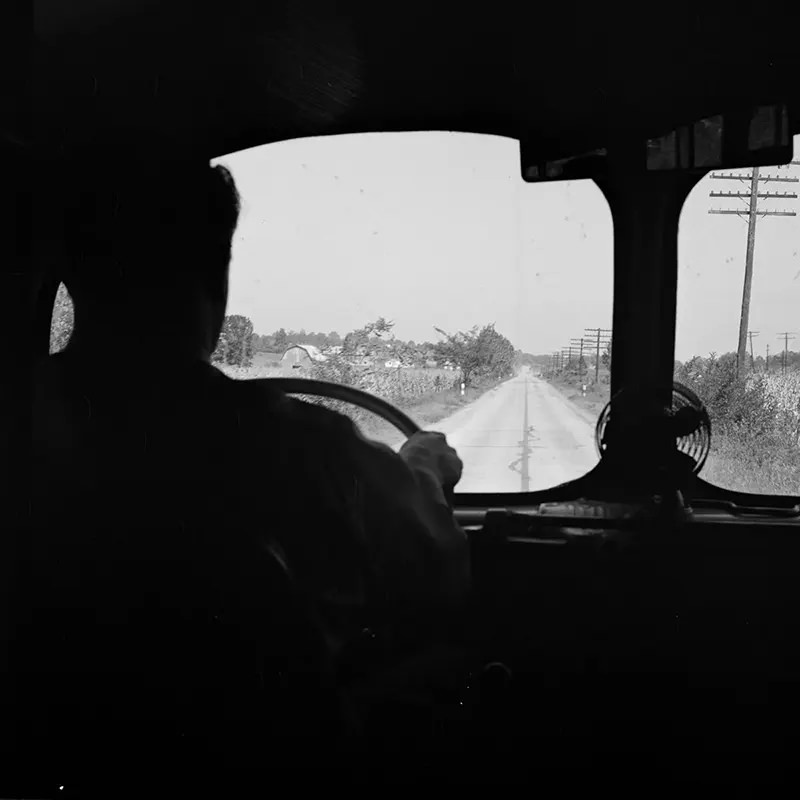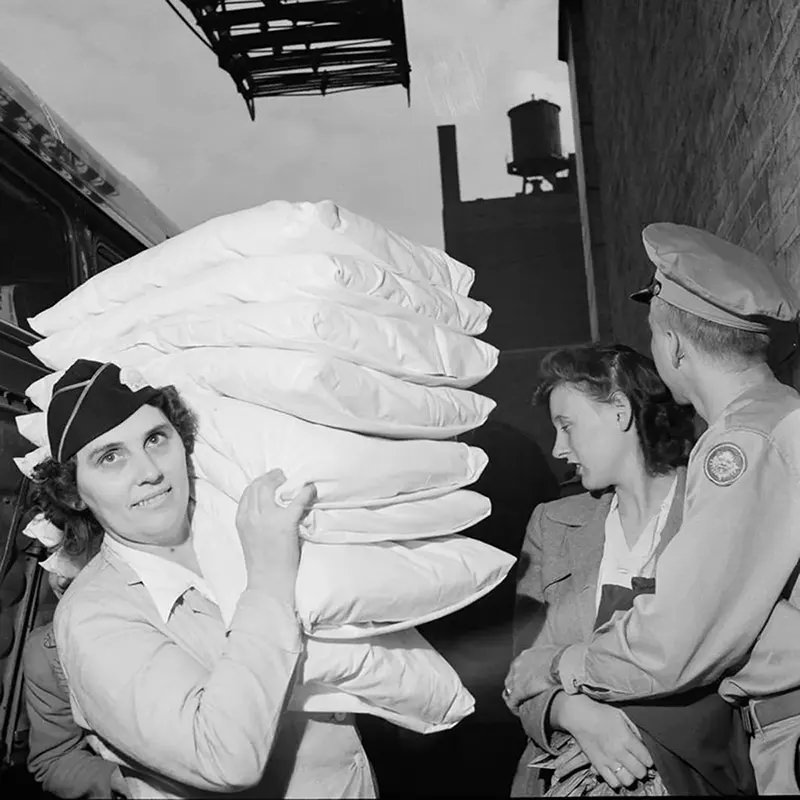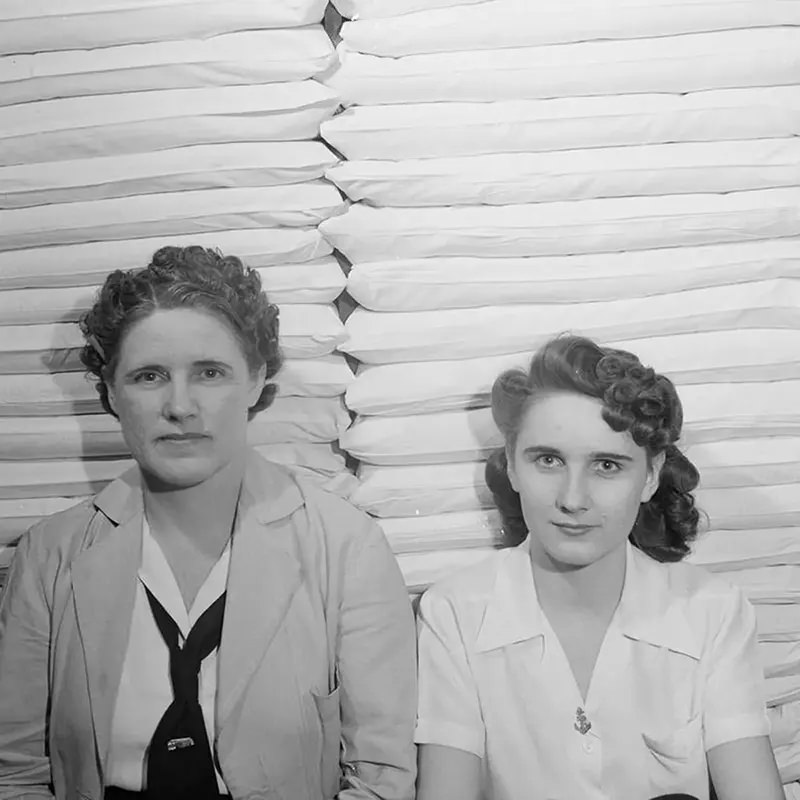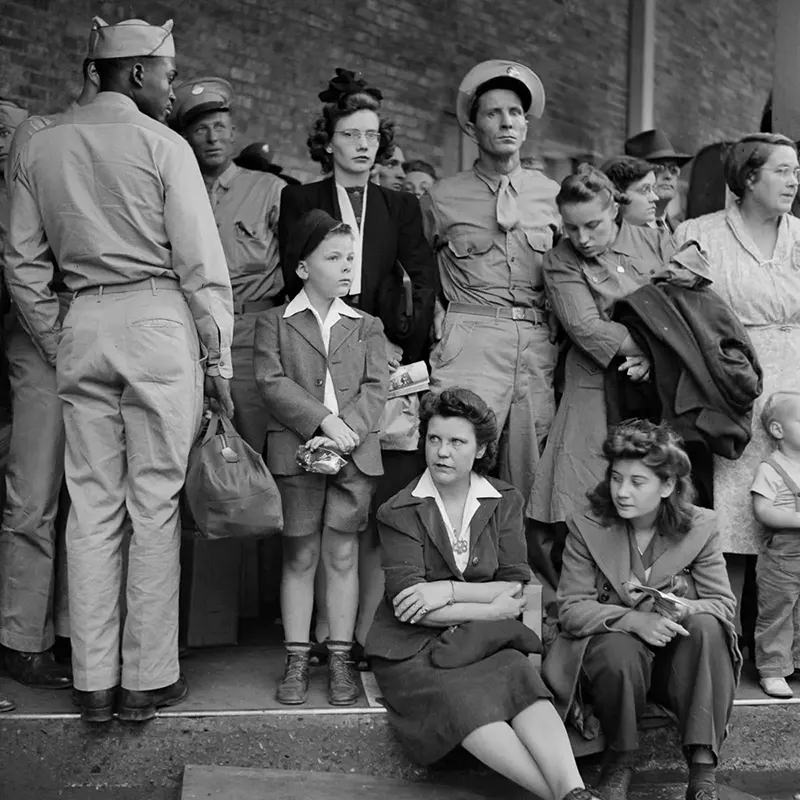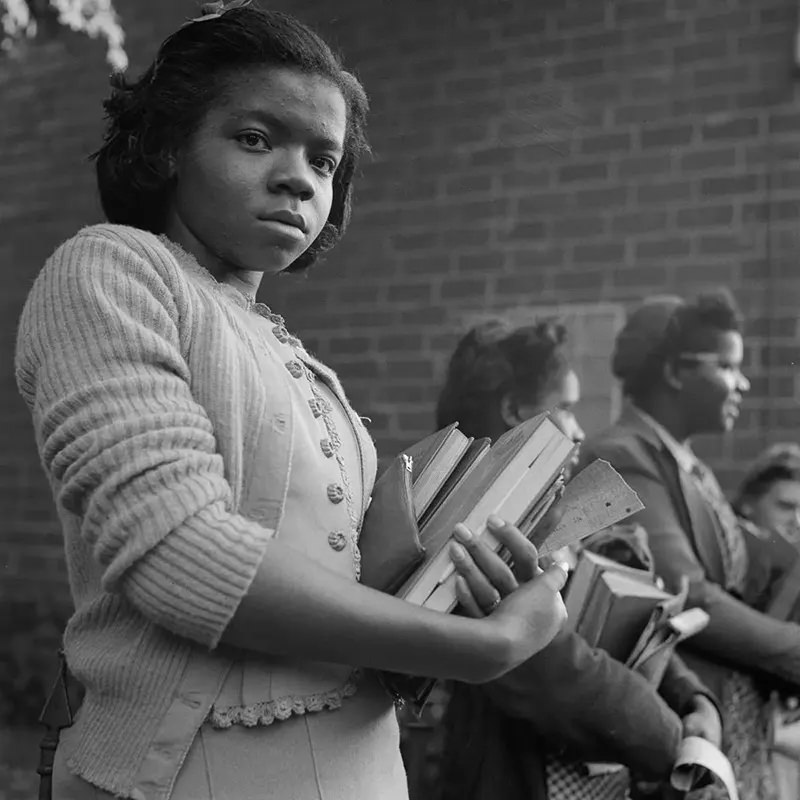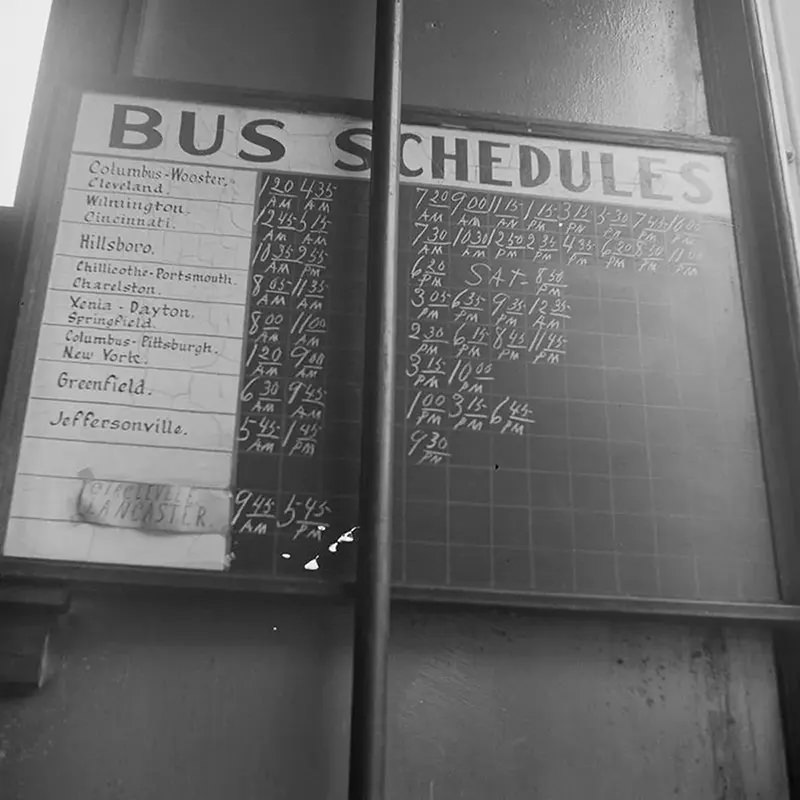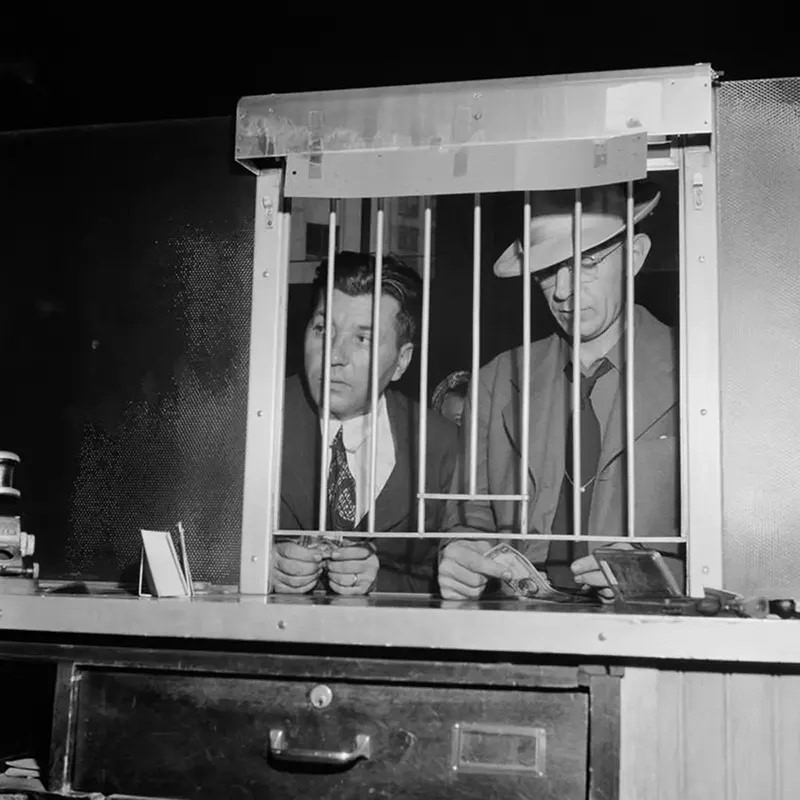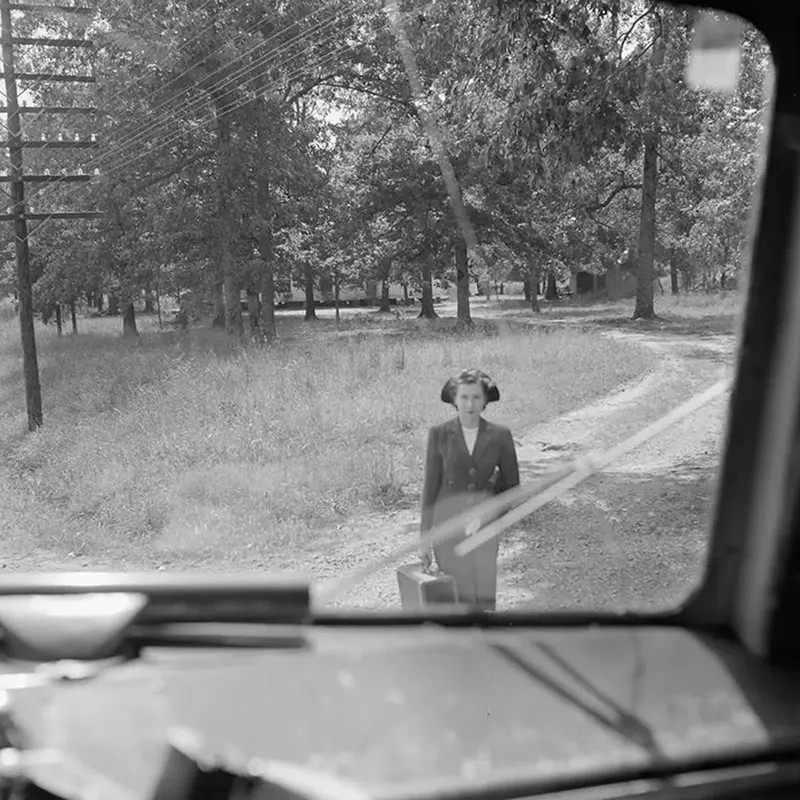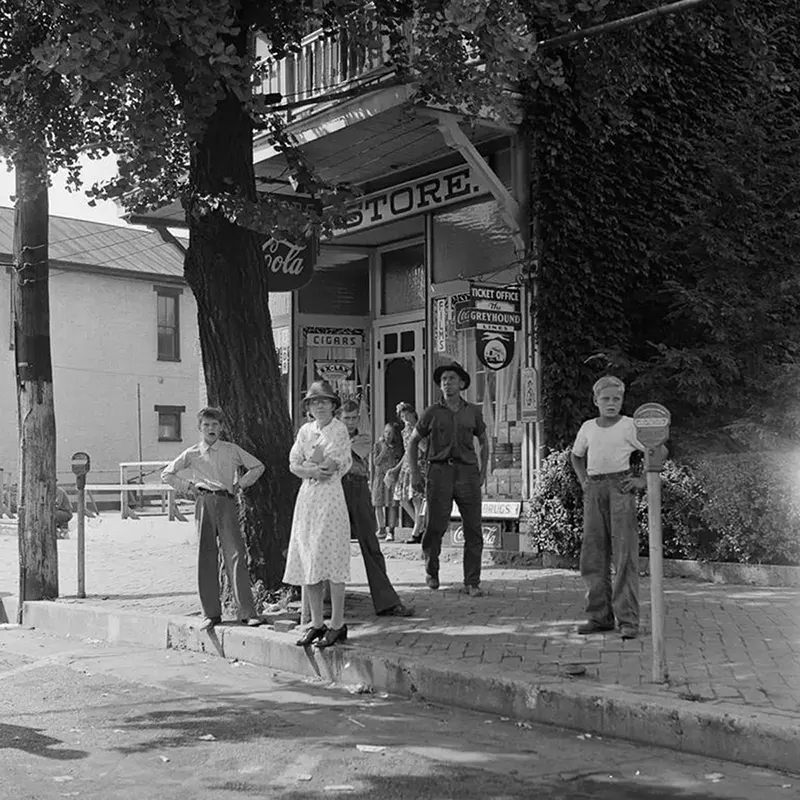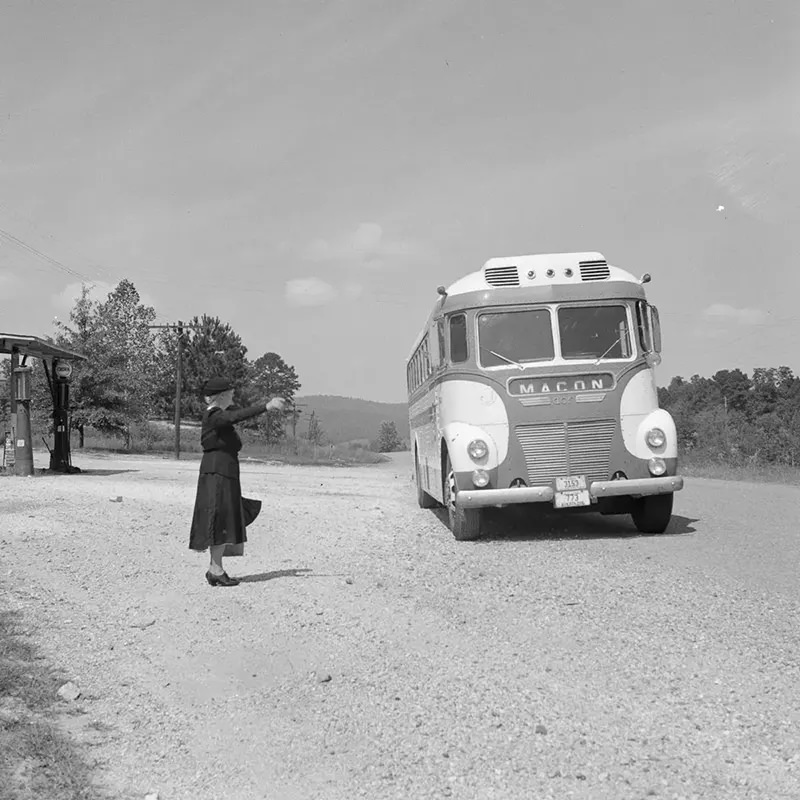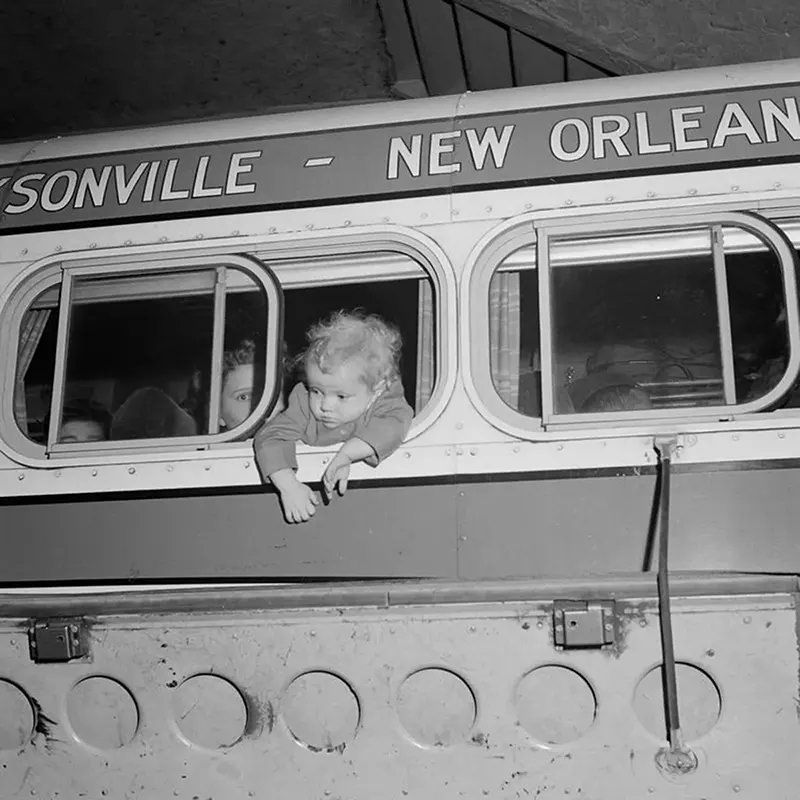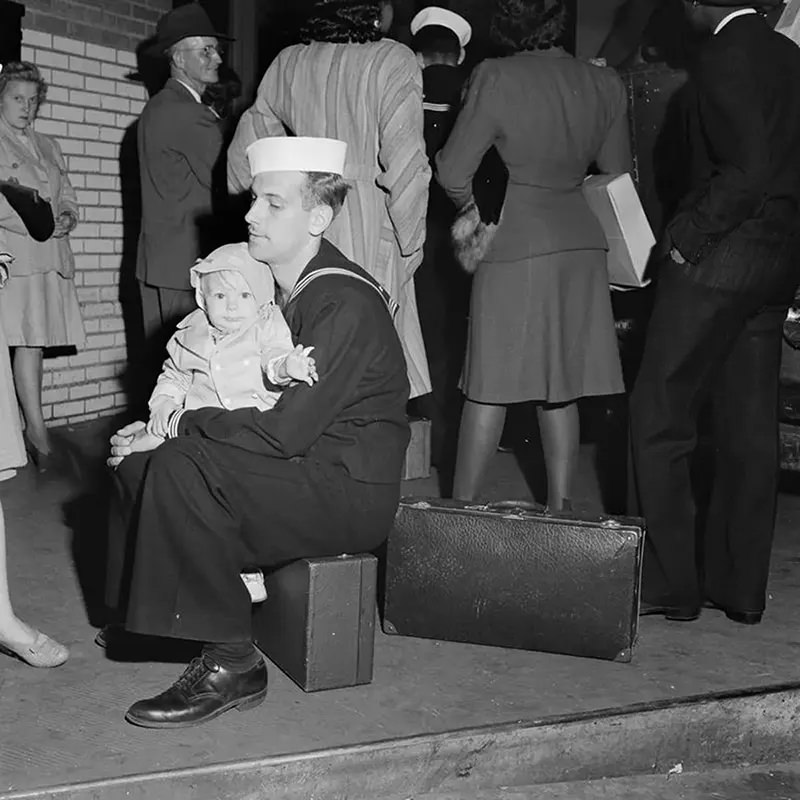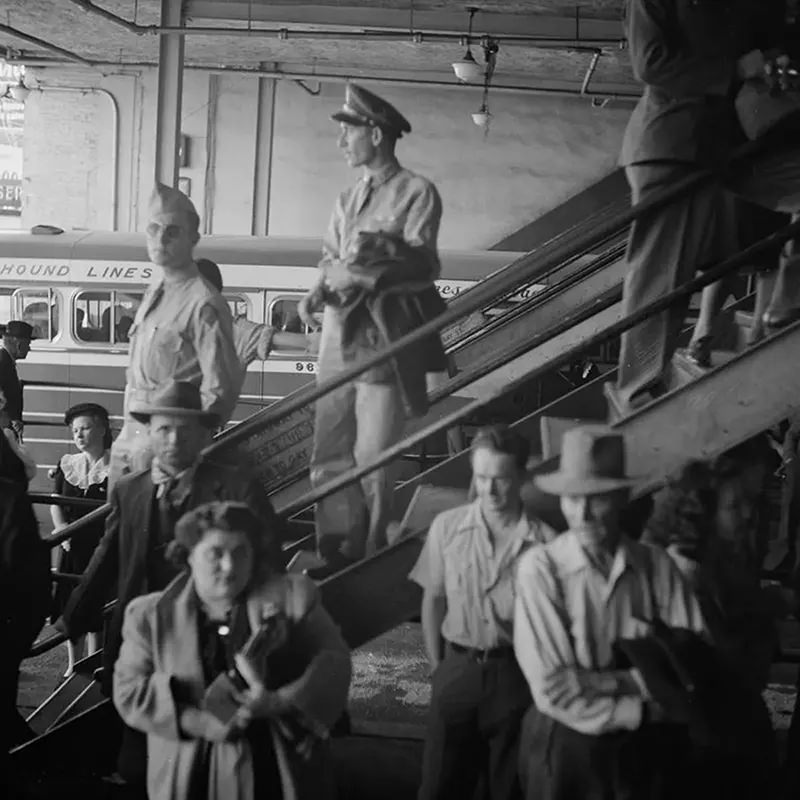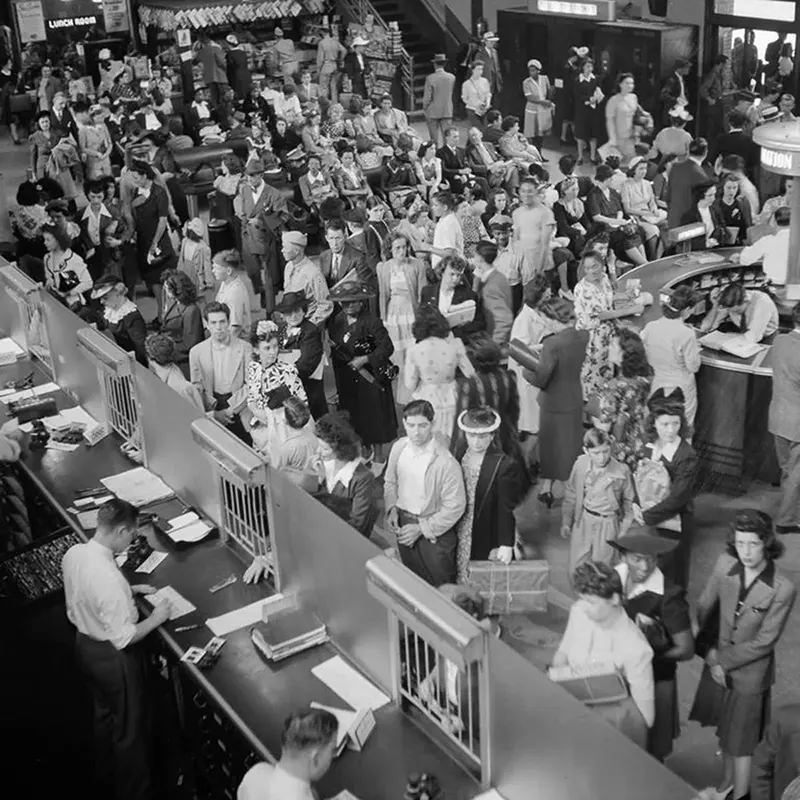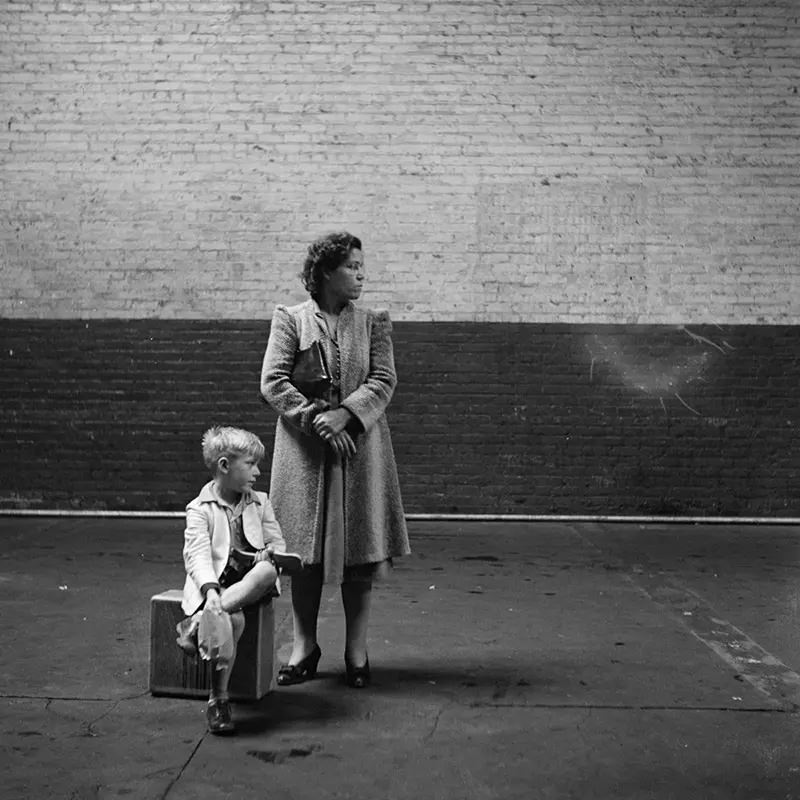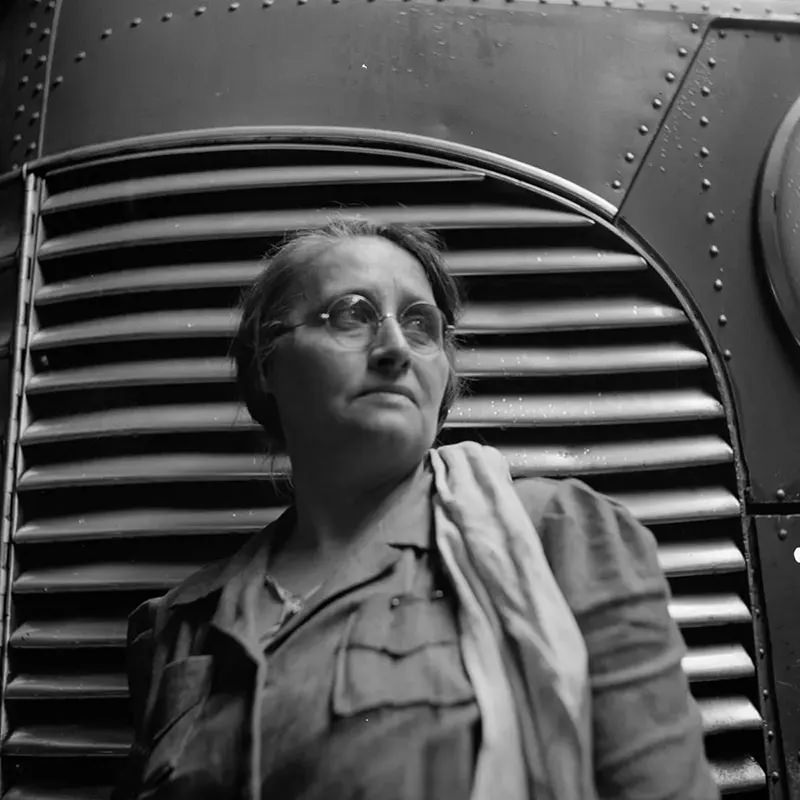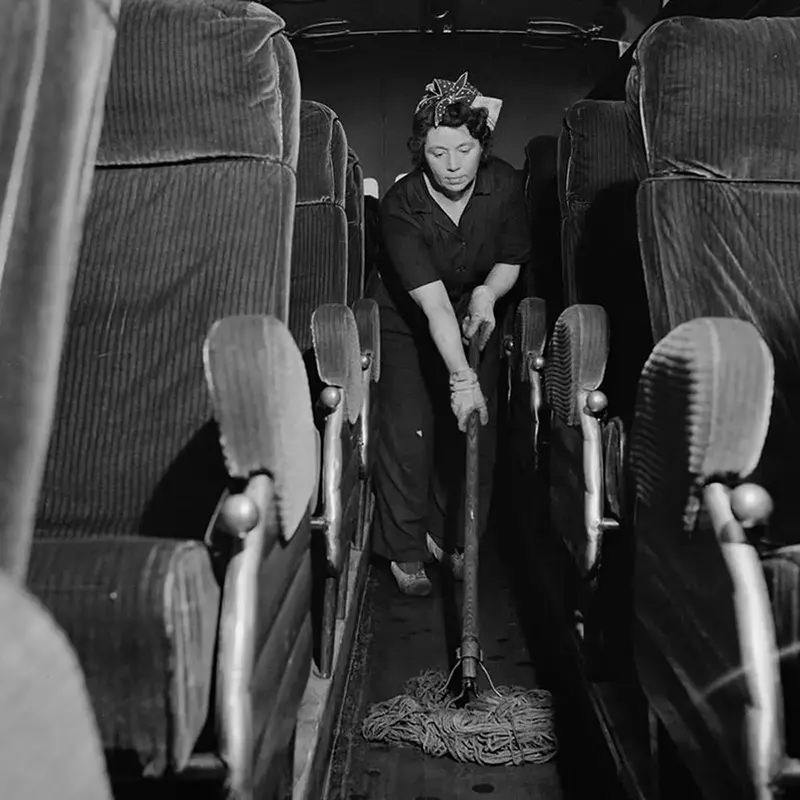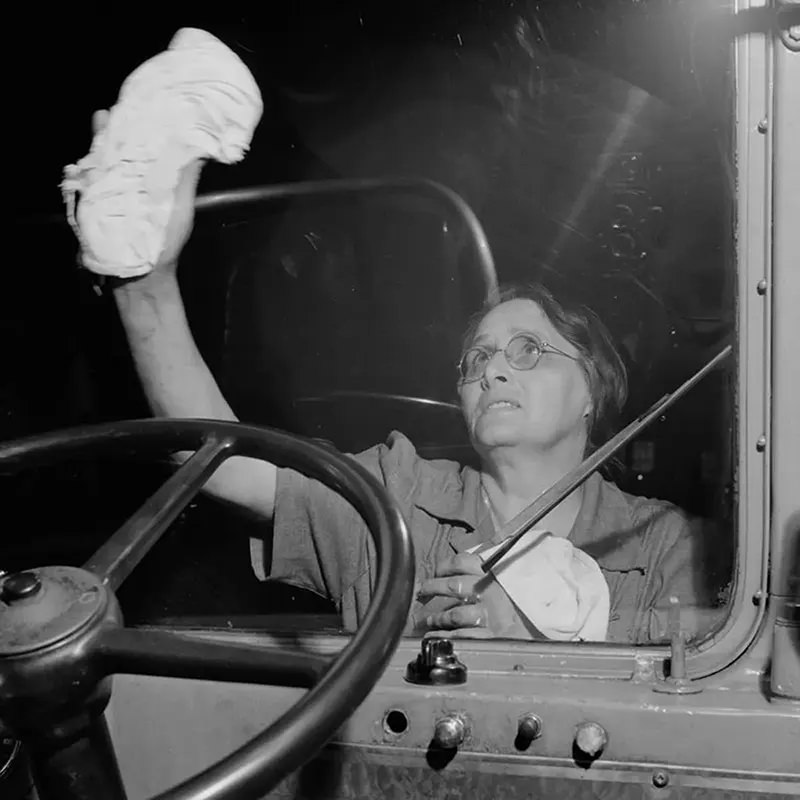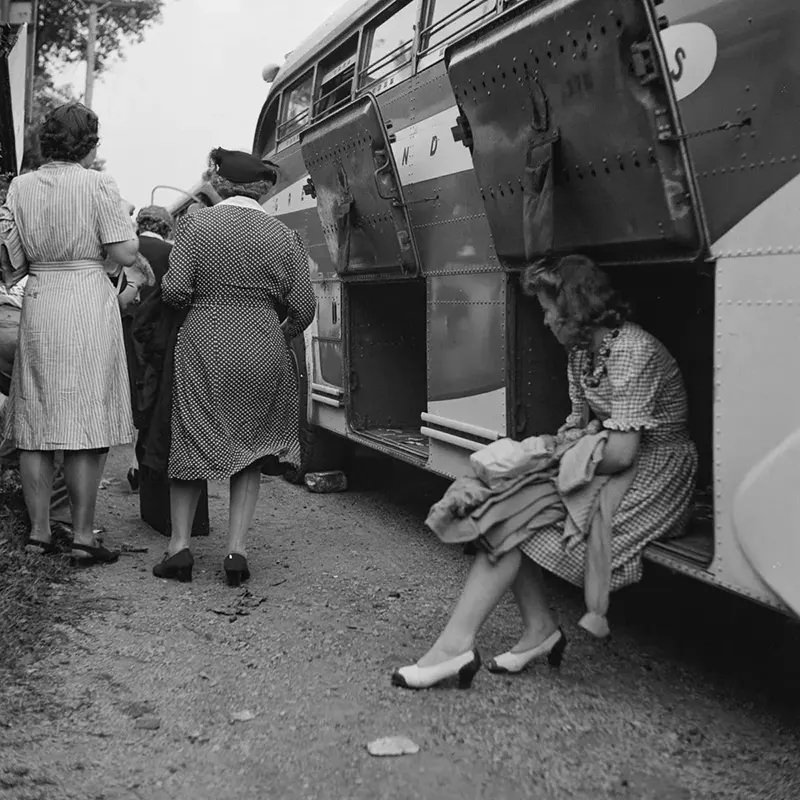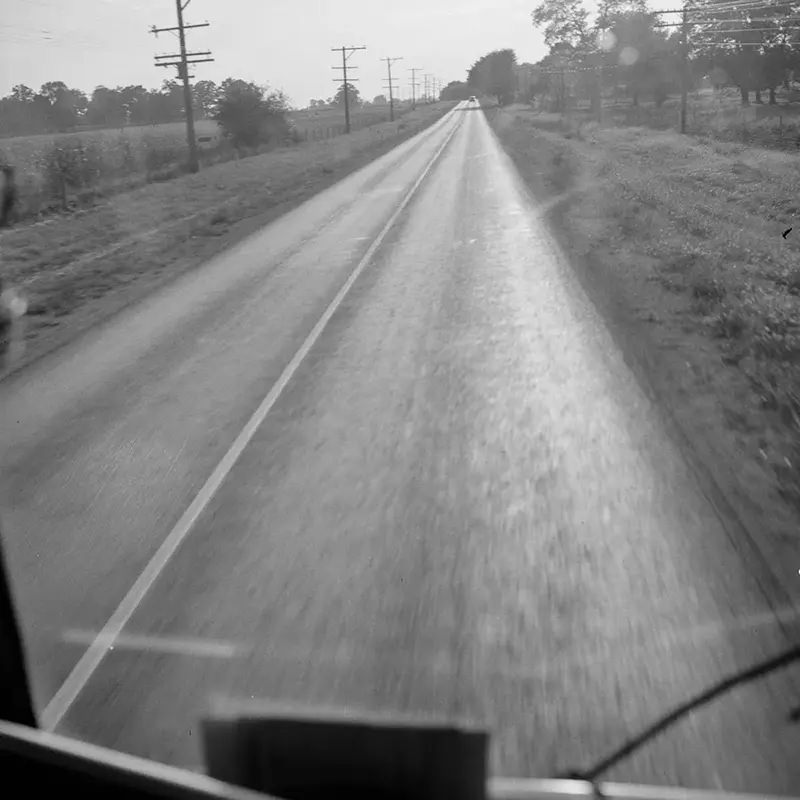In 1942, twenty-one-year-old Esther Bubley began a job at the Office of War Information (OWI) in Washington, DC, as a darkroom technician. Photographers at the OWI started focusing on the war effort instead of rural poverty, including aircraft factories and broader aspects of American infrastructures, such as railroads.
Bubley traveled by bus to document the country’s transition from the Great Depression to World War II in 1943. The rationing of rubber and gasoline led to increased public transportation ridership. Bubley’s unassuming demeanor and love of photographing ordinary people paired well with the close quarters of bus travel. With her Rolleiflex camera, she rode crowded buses on routes throughout the Midwest and the southern United States, capturing intimate and empathetic images of bus riders.
Bubley wrote of the people,
Most passengers, traveling a long distance, seemed to be on vacation. Several were ‘seeing the country.’ A large share of the vacationing people were going to or from Army camps to visit sons, boyfriends and husbands.
Bubley’s fame and recognition are largely based on her early work, which remains an elegant and sincere look at life in 1940s America. Several of her photographs present stark reminders of racial segregation and the realities of the time. In her award-winning 1947 photo essay Bus Story, Bubley returned to the subject of interstate travel. In addition to her contributions to the OWI, Bubley worked with several magazines and corporations during her career, including Life magazine, UNICEF, Standard Oil Company, and Pepsi-Cola.


